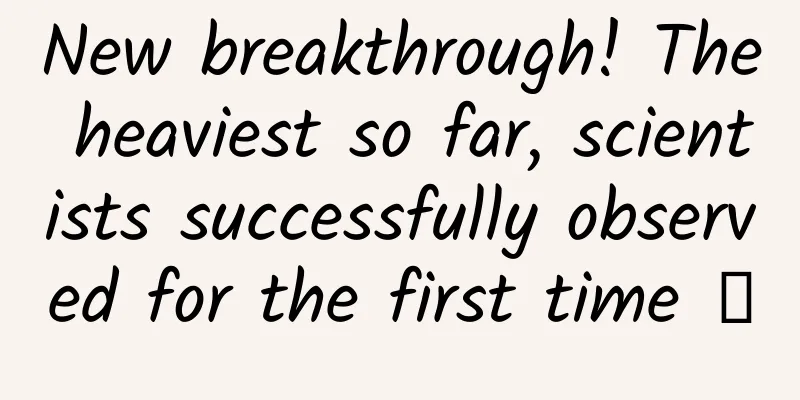New breakthrough! The heaviest so far, scientists successfully observed for the first time →

|
Science and Technology Daily reporter Lu Chengkuan Based on the collision experiment conducted on the Relativistic Heavy Ion Collider in the United States, researchers from the Institute of Modern Physics of the Chinese Academy of Sciences and other Chinese and foreign institutions have observed for the first time a new antimatter hypernucleus - antihyperhydrogen-4 in relativistic heavy ion gold-gold collisions. This is the heaviest antimatter hypernucleus observed by scientists so far. The relevant research results were published online in the journal Nature on the 21st. Image source: Institute of Modern Physics, Chinese Academy of Sciences According to current mainstream physics theories, the universe was born in the Big Bang about 13.8 billion years ago, which produced equal amounts of matter and antimatter. However, in our universe, matter is common, while antimatter is very rare. Antimatter nuclei and antimatter hypernuclei (i.e., nuclei containing hyperons such as Lambda) formed by further combining several antibaryons are even more difficult to produce. Since the "negative energy solution" of the Dirac equation in 1928 predicted the existence of antimatter, scientists have only discovered six antimatter (hyper) nuclei. The anti-hyperhydrogen-4 discovered this time was produced in a relativistic heavy ion collision experiment and consists of an antiproton, two antineutrons and an anti-Lambda hyperon. Because it contains unstable anti-Lambda hyperons, anti-hyperhydrogen-4 will decay after flying only a few centimeters. The research team analyzed the experimental data of about 6.6 billion heavy ion collision events and finally obtained about 16 signals of anti-hyperhydrogen-4. "We also measured the lifetime of anti-superhydrogen-4 and compared it with its corresponding positron superhydrogen-4. Within the measurement accuracy range, there is no obvious difference in the lifetimes of the two, which once again verifies the symmetry of the properties of matter and antimatter." Qiu Hao, a researcher at the Institute of Modern Physics of the Chinese Academy of Sciences, said that the discovery and property research of anti-superhydrogen-4 has enabled people to take another important step in the exploration of antimatter and the symmetry of matter and antimatter. Source: Science and Technology Daily Editor: Wang Chengyue Review: Julie |
>>: Scientists have grown a 'mini brain'. Will it eventually develop consciousness?
Recommend
Can smart speakers snatch the spotlight from TVs as candidates for the living room economy?
Although the status of television is no longer wh...
Test-tube babies are not born in test tubes—when does an embryo become a “person”? |
IVF has changed the way we reproduce, but it has ...
What is Tik Tok SEO? Uncovering the working principle and recommendation algorithm of TikTok search algorithm
Because I wrote an article called "SEO Think...
Snapdragon runs Win10. Can the love between Microsoft and Qualcomm last long?
At the Microsoft WinHEC conference held in Shenzhe...
China Passenger Car Association: Analysis of the national passenger car market in February 2022
1. Review of the national passenger car market in...
Clothes that are dried in the shade smell bad... See here for quick deodorization methods →
Review expert: Peng Guoqiu, deputy chief physicia...
A practical guide to high conversion rates with KOL campaigns!
In the era of traffic anxiety, companies are incr...
China's autonomous driving ushers in a new breakthrough: CCTV live broadcast of Baidu World 2020 to experience fully unmanned driving
China's autonomous driving has ushered in a n...
Daytime Research Society C4D Creative Design Course Gray Day - C4D IP Character Binding
File Directory: ├──Information | ├──MAC decompres...
Xueersi Dynasty Songs 1~4 Collection
Course Catalog: ├──Dynasty 1 (SD) | ├──01 Three S...
Luban e-commerce advertising National Day & Mid-Autumn Festival sales guide!
This article shares with you the National Day and...
Three steps of product operation: attracting traffic, retaining users, and being active
A very good single male friend of mine once made ...
APP wants to become popular overnight? 5 ways to become popular as long as you do it!
With the popularity of mobile Internet finance an...
The recently popular "Winter Goes and Spring Comes Rice" is really recommended for you to try!
Spring is a season full of vitality and vigor. It...









